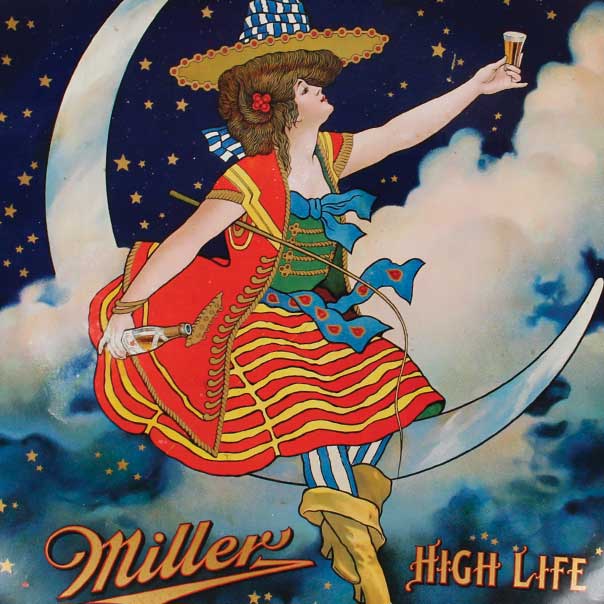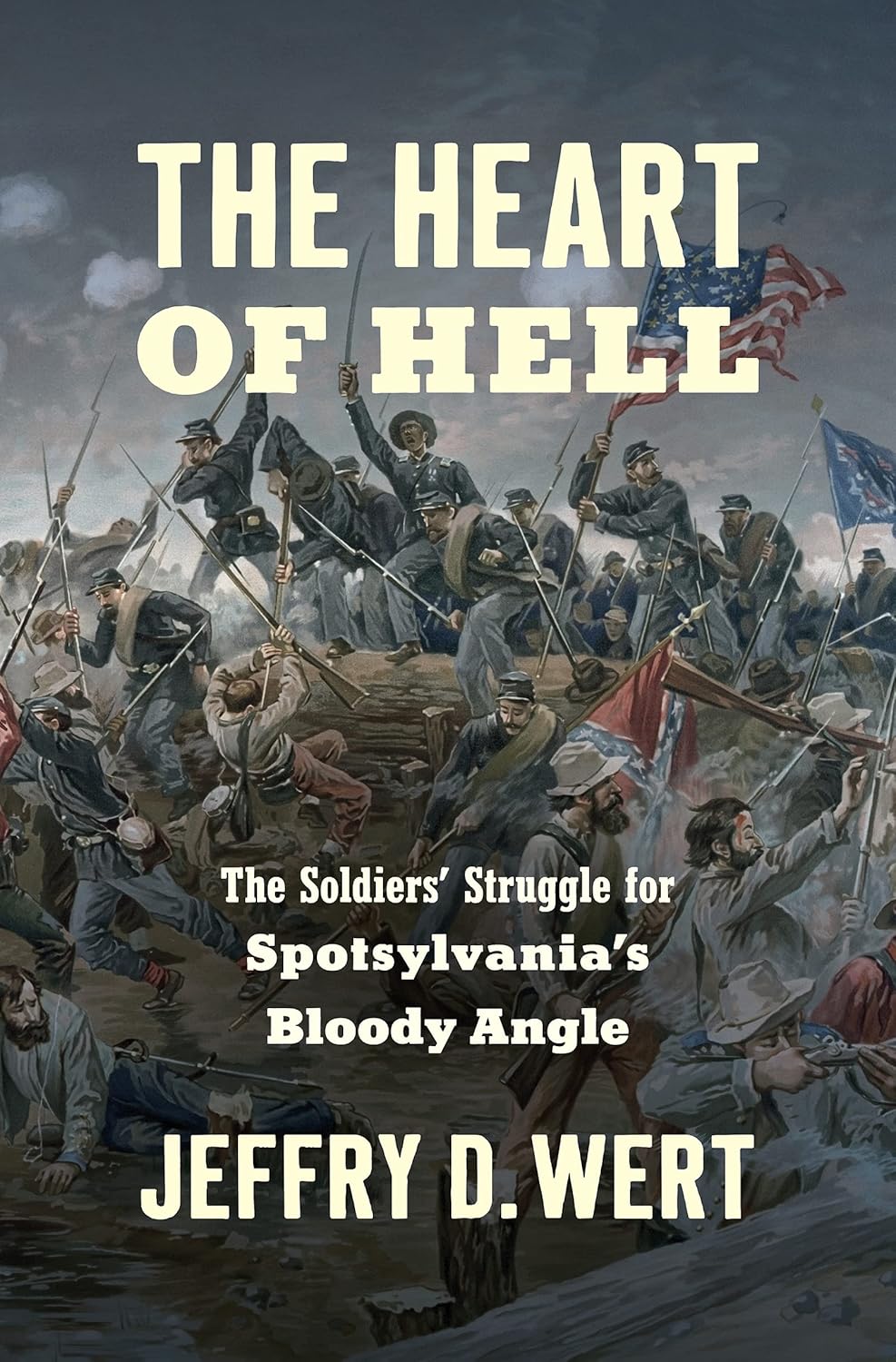- My Forums
- Tiger Rant
- LSU Score Board
- LSU Recruiting
- SEC Rant
- SEC Score Board
- Saints Talk
- Pelicans Talk
- More Sports Board
- Coaching Changes
- Fantasy Sports
- Golf Board
- Soccer Board
- O-T Lounge
- Tech Board
- Home/Garden Board
- Outdoor Board
- Health/Fitness Board
- Movie/TV Board
- Book Board
- Music Board
- Political Talk
- Money Talk
- Fark Board
- Gaming Board
- Travel Board
- Food/Drink Board
- Ticket Exchange
- TD Help Board
Customize My Forums- View All Forums
- Show Left Links
- Topic Sort Options
- Trending Topics
- Recent Topics
- Active Topics
Started By
Message
On this day 160 years ago, the most savage battle of the Civil War was waged in Virginia
Posted on 5/12/24 at 2:36 pm
Posted on 5/12/24 at 2:36 pm
The Battle of the Mule Shoe - May 12, 1864.
Part of the overarching Battle of Spotsylvania Court House (May 8-21, 1864), the so-called Battle of the Mule Shoe was the Union army's attempt to crack a massive salient at the center of Robert E. Lee's Confederate lines wide open. This massive assault, ordered by Ulysses S. Grant and organized by George G. Meade, would be among the largest Union attacks of the entire war. The main assault would be made at dawn and involve three whole army corps, with Winfield S. Hancock's 15,000 men leading the way. The famed Stonewall Brigade - heroes of many a battle - held the very section of line targeted by the Union onslaught. By the end of the day they would cease to exist as a fighting force.
The Union army broke through in multiple places and Lee's army was now in great danger of being split in two. However, disorganization quickly overtook the Union columns and Lee as well as his immediate subordinates were able to react quickly and competently to the attack, sending in wave after wave of reinforcements to stem the tide. All the while Confederate engineers worked feverishly behind the lines to establish a new and stronger defense line further back.
Among the Confederate reinforcements sent in to plug the gaps was a brigade of Alabama infantry under the command of Abner Perrin. My great-great-great-great uncle, serving in Perrin's brigade as part of the 14th Alabama Volunteer Infantry Regiment, was killed in action while fighting to repel the Yankee invaders from the Mule Shoe. His efforts, along with the efforts of thousands of other Confederate soldiers, were enough to push the Union army out of the Mule Shoe and to a point along the ruined Confederate breastworks that would soon become known as "Bloody Angle."
Here at this spot, for the next 18 hours, Union and Confederate soldiers would be involved in a bloody free-for-all of vicious hand-to-hand combat the likes of which had never been seen before on the American continent. Men shot each other at point blank range, stabbed each other, gouged each others eyes out, and beat one another to a pulp as the heavens opened up and sent down a steady downpour of rain. Men drowned in the mud or were crushed by the bodies piling one on top of the other. Neither side would yield to the other, retreat was not an option.
Finally, after nearly 24 hours of continuous combat, the new Confederate earthworks further behind the line had been completed and Confederate forces at Bloody Angle and other points within the Mule Shoe began to pull back to the new line. Only the Union soldiers remained. These survivors were surrounded by the dead and wounded bodies of some 17,000 Union and Confederate soldiers. In some places bodies were stacked as many as 400 deep.
As Wikipedia concludes about the fighting on 12 May 1864:

Grant's Grand Assault - May 12, 1864

"Bloody Angle" in the present day
Part of the overarching Battle of Spotsylvania Court House (May 8-21, 1864), the so-called Battle of the Mule Shoe was the Union army's attempt to crack a massive salient at the center of Robert E. Lee's Confederate lines wide open. This massive assault, ordered by Ulysses S. Grant and organized by George G. Meade, would be among the largest Union attacks of the entire war. The main assault would be made at dawn and involve three whole army corps, with Winfield S. Hancock's 15,000 men leading the way. The famed Stonewall Brigade - heroes of many a battle - held the very section of line targeted by the Union onslaught. By the end of the day they would cease to exist as a fighting force.
The Union army broke through in multiple places and Lee's army was now in great danger of being split in two. However, disorganization quickly overtook the Union columns and Lee as well as his immediate subordinates were able to react quickly and competently to the attack, sending in wave after wave of reinforcements to stem the tide. All the while Confederate engineers worked feverishly behind the lines to establish a new and stronger defense line further back.
Among the Confederate reinforcements sent in to plug the gaps was a brigade of Alabama infantry under the command of Abner Perrin. My great-great-great-great uncle, serving in Perrin's brigade as part of the 14th Alabama Volunteer Infantry Regiment, was killed in action while fighting to repel the Yankee invaders from the Mule Shoe. His efforts, along with the efforts of thousands of other Confederate soldiers, were enough to push the Union army out of the Mule Shoe and to a point along the ruined Confederate breastworks that would soon become known as "Bloody Angle."
Here at this spot, for the next 18 hours, Union and Confederate soldiers would be involved in a bloody free-for-all of vicious hand-to-hand combat the likes of which had never been seen before on the American continent. Men shot each other at point blank range, stabbed each other, gouged each others eyes out, and beat one another to a pulp as the heavens opened up and sent down a steady downpour of rain. Men drowned in the mud or were crushed by the bodies piling one on top of the other. Neither side would yield to the other, retreat was not an option.
Finally, after nearly 24 hours of continuous combat, the new Confederate earthworks further behind the line had been completed and Confederate forces at Bloody Angle and other points within the Mule Shoe began to pull back to the new line. Only the Union soldiers remained. These survivors were surrounded by the dead and wounded bodies of some 17,000 Union and Confederate soldiers. In some places bodies were stacked as many as 400 deep.
As Wikipedia concludes about the fighting on 12 May 1864:
quote:
The combat they had endured for almost 24 hours was characterized by an intensity of firepower never previously seen in Civil War battles, as the entire landscape was flattened, all the foliage destroyed. An example of this can be found in the Smithsonian Museum of American History: a 22-inch stump of an oak tree at the Bloody Angle that was completely severed by rifle fire. There was a frenzy to the carnage on both sides. Fighting back and forth over the same corpse-strewn trenches for hours on end, using single shot muskets, the contending troops were periodically reduced to hand-to-hand combat reminiscent of battles fought during ancient times. Bodies piled up four and five high, and soldiers were forced to pause from time to time and throw corpses over the parapet since they formed an obstacle in the way of the fighting. Dead and wounded men were shot so many times that many of them simply fell apart into unrecognizable heaps of flesh.
Surviving participants attempted to describe in letters, diaries, and memoirs the hellish intensity of that day, many noting that it was beyond words. Or, as one put it: "Nothing can describe the confusion, the savage, blood-curdling yells, the murderous faces, the awful curses, and the grisly horror of the melee." Some men claimed to have fired as many as 400 rounds that day.

Grant's Grand Assault - May 12, 1864

"Bloody Angle" in the present day
Posted on 5/12/24 at 2:48 pm to RollTide1987
So much carnage just to defend slavery.


Posted on 5/12/24 at 2:50 pm to RollTide1987
That sounds like Hell on earth.
Posted on 5/12/24 at 3:00 pm to RollTide1987
Take the scene this paints and compare it to the attitude of the general public when the war started. Many viewed a battle as a form of entertainment, packing a picnic, and taking the family to a sunny hillside to snack on finger foods and visit with others as the fight raged a short distance away.
That romanticism of war would lead too many men to their deaths, and would prove difficult to break.
That romanticism of war would lead too many men to their deaths, and would prove difficult to break.
Posted on 5/12/24 at 3:04 pm to RollTide1987
If I can time travel I want to go back to that day armed with an M60.
Posted on 5/12/24 at 3:04 pm to LegendInMyMind
Most were expecting it to take a few weeks to months like some of the recent wars in Europe
Posted on 5/12/24 at 3:10 pm to RollTide1987
quote:
Dead and wounded men were shot so many times that many of them simply fell apart into unrecognizable heaps of flesh.
It’s pretty amazing what men are capable of doing to each other, and not in a good way.
Posted on 5/12/24 at 3:16 pm to RollTide1987
quote:
In some places bodies were stacked as many as 400 deep.
This didn't happen. 40 stories worth of bodies?
Posted on 5/12/24 at 3:26 pm to chinhoyang
quote:
This didn't happen. 40 stories worth of bodies?
I apologize. I typed too fast without going back to check my grammar. What I meant to convey were that bodies were stacked four and five deep in places in groups up to as many as 400.
Posted on 5/12/24 at 3:31 pm to RollTide1987
Posted on 5/12/24 at 3:33 pm to RollTide1987
quote:
I apologize. I typed too fast without going back to check my grammar. What I meant to convey were that bodies were stacked four and five deep in places in groups up to as many as 400.
No need to apologize but I apologize as my response sounded abrupt (and I didn't mean it that way).
Posted on 5/12/24 at 3:33 pm to chinhoyang
400 Deep , not high. Very likely occurred.
Posted on 5/12/24 at 3:44 pm to michael corleone
Simply put, the whole Civil War was a rich man's war and a poor man's fight.
Posted on 5/12/24 at 3:49 pm to biglego
quote:So much carnage for a bunch of slaves.
So much carnage just to defend slavery.
Posted on 5/12/24 at 3:51 pm to saintsfan1977
quote:
If I can time travel I want to go back to that day armed with an M60.
Which side you shooting the pig at?
Posted on 5/12/24 at 3:52 pm to Purplehaze
quote:
the whole Civil War was a rich man's war and a poor man's fight.
That's true of most wars
Posted on 5/12/24 at 3:55 pm to RollTide1987
Truly disgusting all of the death and horror caused by the traitorous confederates
Posted on 5/12/24 at 3:56 pm to Damone
quote:
Truly disgusting all of the death and horror caused by the traitorous confederates
Keep doing you, dude.
Posted on 5/12/24 at 4:08 pm to lsuguy84
Did a tour of the battlefield some years ago - not large area-battlefield as I recall. Rifled musket fire was so intense at the Bloody Angle a 22 inch dia oak tree was felled by mini-balls hitting it. The stump is on display at the Smithsonian.
Spotsylvania Stump
"Until 12 May 1864, this shattered stump was a large oak tree in a rolling meadow just outside Spotsylvania Court House, Virginia. That morning, 1,200 entrenched Confederates, the front line of General Robert E. Lee's Army of Northern Virginia, awaited the assault of 5,000 Union troops from the Second Corps of the Army of the Potomac. Twenty hours later, the once-peaceful meadow had acquired a new name, the Bloody Angle. The same fury of rifle bullets that cut down 2,000 combatants tore away the twenty-two inch tree trunk. Several of the conical minie balls (bullets) are still deeply embedded in the wood. Unusual objects of war, such as this tree stump, come to symbolize the horror and heroism of a great battle. Originally presented to the U.S. Army's Ordnance Museum by Brevet Major General Nelson A. Miles, the stump was transferred to the Smithsonian in 1888."
Spotsylvania Stump
"Until 12 May 1864, this shattered stump was a large oak tree in a rolling meadow just outside Spotsylvania Court House, Virginia. That morning, 1,200 entrenched Confederates, the front line of General Robert E. Lee's Army of Northern Virginia, awaited the assault of 5,000 Union troops from the Second Corps of the Army of the Potomac. Twenty hours later, the once-peaceful meadow had acquired a new name, the Bloody Angle. The same fury of rifle bullets that cut down 2,000 combatants tore away the twenty-two inch tree trunk. Several of the conical minie balls (bullets) are still deeply embedded in the wood. Unusual objects of war, such as this tree stump, come to symbolize the horror and heroism of a great battle. Originally presented to the U.S. Army's Ordnance Museum by Brevet Major General Nelson A. Miles, the stump was transferred to the Smithsonian in 1888."
Popular
Back to top

 13
13










